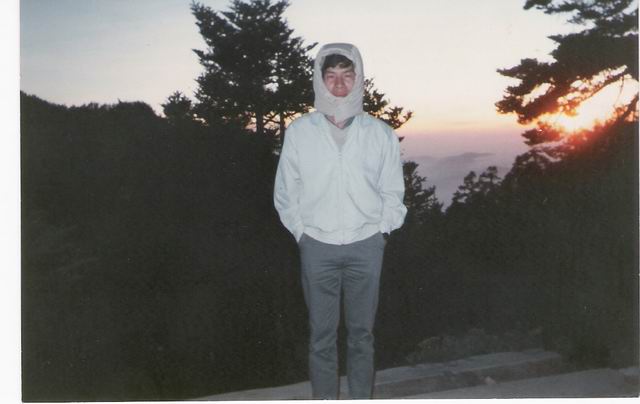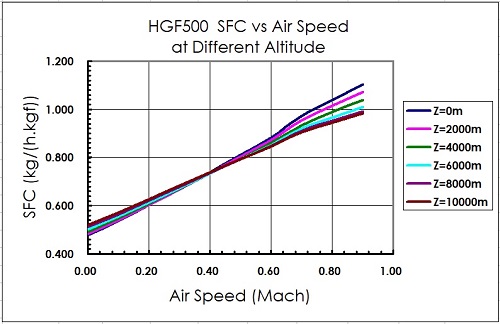0. Origin of the name "JetBeetle" ?
The tiny yellow-and-black creature blasts a jet of boiling liquid at its enemies at 300 explosive pulses per second. The fiery potion, which reaches 100C, is made in a heart-shaped chamber less than a millimeter long and tipped with a swiveling nozzle on the beetle's backside.
No matter what might out come for this project, we shouldn't de-associate the words "Jet" and "Beetle", because they do relate, let alone a new company's name is called JetBeetle.
1. I haven't seen any RC or manned aircrafts use one of your engines as powerplant ?
Our turbofan engines are designed for manned applications, they will become reality very soon. RC applications ? no, thanks, our engines are too big. :-)
Micro : < 10lb
Mini : 10 - 100
Small : 100 - 1000
Medium : 1000 - 10000
Large : > 10000
According to this definition, MW54, KJ66 cannot be called "Micro" either, they are of "Mini" for sure. I think nowadays people call something micro is because it is relatively compact in size, not necessarily according to strict scientific definitions.
If I am not mistaken, SFC for KJ66 is 0.154 Kg/N/H, mine is much bigger and have higher pressure ratio, there is no reason X-150 shall perform worse than that. OK, This is my new goal : SFC < 0.12 Kg/N/H, which is equivalent to 1.5 liters/min at max throttle.
Most engines operate at 70-80 % throttle
condition or even lesser, which will consume much less fuel and save more money spent on
fuel. During normal use the fuel consumption will be around 1.0
liters/min I believe.
http://jetbeetle.com
Old links will be redirected to this new web site ! Sorry for the inconvenience caused. My crappy web site has been improved a little bit; I hope you can find something beneficial from it.
| Material | Steel | Cast Al | Wrought Al |
| Alloy | Galvanized | A356-T6 | 6061-T6 |
| Process | Sheet | P/M cast | Extrusion |
| Density (g/cm3) | 7.8 | 2.76 | 2.70 |
| Young's modulus (Gpa) | 210 | 72 | 69 |
| Yield strength (Mpa) | 200 | 186 | 275 |
| Tensile strength (Mpa) | 320 | 262 | 310 |
| Elongation (%) | 40 | 5 | 12 |
| Fatique strength(MPa) | - | 90 | 95 |
| Coef. of heat conductivity(W/m.K) | 46 | 159 | 167 |
| Coef. of thermal expansion (mm/m.deg K) | 11.7 | 21.5 | 23.6 |
| Melting point (deg C) | 1515 | 615 | 652 |
In my rough calculation, the weight of shaft tunnel would add approximately 0.5kg, which is about 5% in total weight if stainless is the choice. So In most micro turbojet engines like KJ66, and MW54, they all use aluminum shaft tunnels for this reason. Certainly I want to keep the total weight of my engine as light as possible, so aluminum will be my first choice. However, there does exist the hazard of overheating of our tunnel at where the NGV/tunnel contacts. I am in fact thinking to add heat barrier between them, so that the hazard can be eliminated. We'll have stainless tunnels as an option for customer's choice.
6. What is the difference between Taiwan and Thailand ?
7. Who are you and why you know the manufacturing method regarding turbines ?
After I started my jet engine business in 2005, I went back to school for learning theory of gas turbines and gas dynamics, rocket propulsion etc. I am member of the Phi Tau Phi Scholastic Honor Society of Taiwan.
In early stages I design/manufacture key engine components for other engine companies, such as Wasp H20's turbine wheels, NGVs and other parts. Through these years in developing my own successful jet engines (such as H25, H85, H150) now I can say I am 100% a micro/mini/small jet engine designer.

8. You clearly have an excellent grasp of English, the grammar on the web pages lets them down.
9. The next move in twin spool technology will no doubt be towards the two stage centrifugal compressors to get the compression ratio up and therefore the fuel consumption down which I think would be the most desirable result for any model flyer in particular.
I am thinking of what compression ratio would cause a TIT higher than which inconel 713 could withstand, and end up homebuilders have to seek one or more of these expensive technologies :
1. Directionally solidified structure,
2. Single crystal,
3. Thermal barrier coating,
4. Turbine internal cooling,
...
I do think item 1-4 are exclusive games for those multi-million dollar aviation industrial giants only. I don't know, maybe I am wrong, but a compression ratio of 4.0-5.0 could very possibly be the redline
homebuilders should never trespass. I wish someone could correct me or confirm for me. Any input would be very appreciated.
10. Jet engine basics ?
2. Increase mass or increase velocity or both, to get large momentum.
3. Both C/R and TIT are crucial factors to thermal efficiency, so higher C/R and higher TIT are preferred.
4. Experience tells us, for an engine with single staged compressor/single staged turbine, always select a compressor with exducer about the same size to turbine.
5. For centrifugal compressors of specific exducer size, bigger trim size, higher air flow but lower C/R; smaller trim size, higher C/R but lower air flow.
6. Once the compressor is selected, for a specific pressure ratio, to keep the compressor operating at optimum condition, there is only narrow range of air flow value allowed, check the compressor map
please.
11. Raising TIT is the path to higher thrust, not higher efficiency.
The reason is, Brayton cycle is so idealized, in a practical engine the assumption of isentropic compression and isentropic expansion never occurs, instead, entropy increases for both processes. This introduces TIT and CIT into the formulation of the thermal efficiency.
If we examine the complex formula, we'll find that higher PR results in higher thermal efficiency, no doubt. In addition, we'll find that lower CIT and higher TIT tend to improve the thermal efficiency too.
12. Could you show me the picture of X Ray examination for your wheel?
13. If you compare 713C and 718, what are the pro's and con's of these materials?
14. Balancing calculations ?
e = G/ω = 2.5 / (2 x 3.14 x 1250) = 0.000318mm = 0.318 μm
Mass of my turbine wheel = 650g, the unbalance amount allowed is
M x e = 650 x 0.000318 = 0.2 g-mm
m = M x e / r = 0.2 / 33 = 0.006g
where r is the radius of sacrificing ring.
In other words, to be in accordance with ISO 1940, the residual unbalanced mass at sacrificing ring must be less than 0.006g. Following is an aluminum chip, 0.25mm of thickness, 0.006gram of weight. Imagine the case of inconel, this chip will be of 1/3 of its size only!
15. Static balancing vs dynamic balancing of a rotor ?
16. What's with the P2?
"A jet engine is a machine whose purpose is to increase the momentum of air stream passing through it".
So increase the mass or velocity or both. Increasing CDP is the best method, as higher the pressure, denser the air, thus higher mass flow is delivered. If you read any text book of jet engine, you'll find that the Brayton cycle is the idealized jet engine cycle, through the analysis the thermal efficiency is directly related to pressure ratio p2/p1. Higher PR, better fuel economy. If we remove the assumption of isentropic compression/expansion which Brayton cycle used to simplify the formulation, T1 and T3 will also be factors affecting the thermal efficiency. Lower T1 and higher T3 will help improving the performance of a jet engine.
17. Is preload in the bearings used to limit the turbine speed ?
Preload is
used to remove radial clearance which has bad influences on bearing life as
radial clearance will cause vibration and noise.
So it is preload that made the bearings to last longer in high rpm.
Radial
clearance of course refers to clearance in the ball races. The existance of
radial clearance is a big problem in high speed, especially when we are
using the ball race bearings to run far beyond its rating RPM. We are saying
to run at 150-170K RPM.
The axial force on the bearings is not used to limit the RPM, on the
contrary, axial force must be applied adequately or bearing cannot go up to
such high speed. If axial force is too big of course it will act like a
brake so a lot of heat will be generated, and too much heat will cause the
bearing to fail.
Use throttling to the fuel pump instead of using axial force in the ball
races to limit the turbine speed.
Condition T (with a limiting ruling section of 6") gives a min yield of 44 Tsi and a min UTS of 55 tsi.
IF you are interested, the compressor for X-150 will no longer be ST-50, it will be out of our own design, pressure ratio up to 5.0.
That's a good question. if you look
carefully, both engines curves have a minimum, turbojet at around 0.4Mach,
and turbofan at 0.7Mach, after which points the both curves tried to rise,
just that the turbojet rise much higher than the turbofan. So it is bad idea
to fly at 0.4Mach for turbojet and 0.7Mach for turbofan.
When the aircraft is moving forward, the forward speed reduces the thrust
due to the exhaust speed is now smaller relative to ambient air. This is so
called ram drag effect, but at the same time, forward speed of air causes
more air to get into the engine, which helps the engine to get more thrust,
this is called ram recovery. These two effects are fighting with each other.
For both engines, before the lowest point, the ram drag effect dominates,
after the lowest point, ram recovery effect dominates, just that for
turbojet the ram recovery is very obvious, but for turbofan the ram recovery
is not so obvious. This is why turbojet is used at high speed applications,
even supersonic, more suitable for high speed flights, yet turbofan isn't.
Turbofan design is a trade off between amount of air moved and exhaust
speed, that is to move larger amount of air for more thrust with reduced
exhaust speed, and turbojet
moves smaller amount of air at higher exhaust speed for more thrust.

Then I bought a Chinese balancer instead, at 6KUSD, but it was a junk, not working. And I bought from a Hungarian supplier, sound card based sensor, it is also a junk. These frustrations gave me the motive to develop my own balancer. And now our ARX2 has became standard equipment in our shop. We simply can't live w/o it.